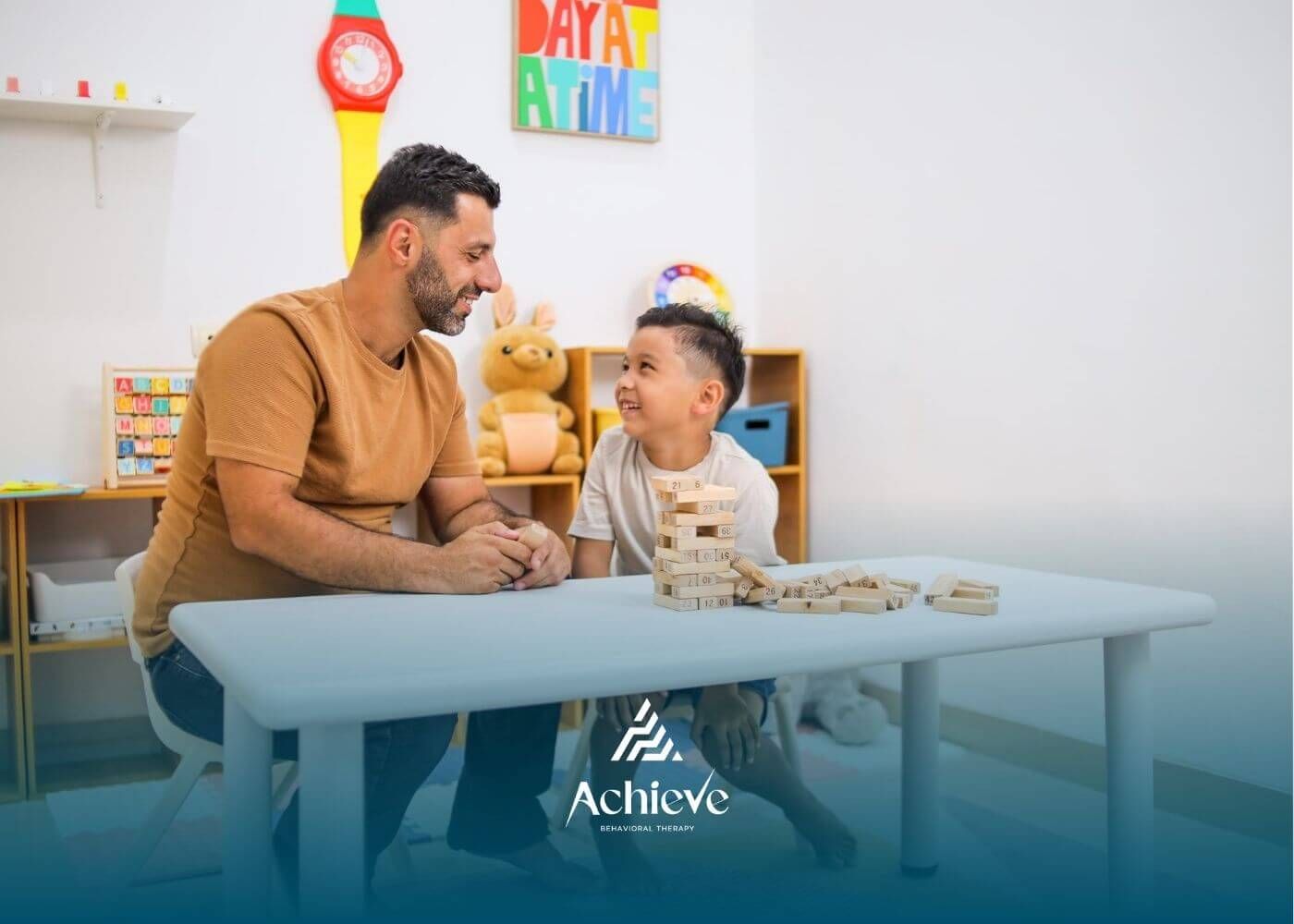How ABA Therapy Techniques for Autism Can Make a Difference

Understanding ABA Therapy
Applied Behavior Analysis (ABA) therapy is a widely recognized intervention for autism, focusing on improving social, communication, and learning skills through positive reinforcement.
Benefits of ABA Therapy
ABA therapy offers numerous benefits for individuals with autism:
- Behavior Modification: ABA therapy can modify behaviors and potentially reduce the need for special services later in life for individuals with autism.
- Positive Reinforcement: This is a main strategy used in ABA therapy. Behaviors followed by something valued (a reward) are more likely to be repeated, encouraging positive behavior change.
- Proven Efficacy: ABA therapy has been used to help children with autism and related developmental disorders since the 1960s, with methods that have been studied for decades and have helped many kinds of learners acquire different skills.
For more detailed information on the benefits, you can explore our comprehensive guide on applied behavior analysis for autism.
Overview of ABA Techniques
BCBAs (Board Certified Behavior Analysts) may use several techniques when implementing ABA therapy. Common strategies include:
- Prompting Strategies: These are cues or prompts given to the individual to elicit a correct response. Different levels of prompting, from physical guidance to verbal cues, can be used based on the individual's needs.
- Reinforcement Methods: Positive reinforcement is used to increase the frequency of desired behaviors by following them with rewards. This could include verbal praise, tokens, or other favorite activities.
- Functional Communication Training: Improving functional communication is crucial for individuals with autism. BCBAs tailor communication interventions to fit the individual's needs, helping them learn effective ways to communicate their wants and needs.
These techniques are fundamental to ABA therapy and form the cornerstone of many successful interventions. For more insights into the techniques used in ABA therapy, refer to our detailed page on ABA therapy for autism.
Key ABA Therapy Techniques
ABA therapy techniques for autism are varied and tailored to meet the individual needs of each person with Autism Spectrum Disorder (ASD). Key techniques include prompting strategies, reinforcement methods, and functional communication.
Prompting Strategies
Prompting strategies involve giving cues or assistance to encourage the desired behavioral response. There are different types of prompting, each with its own level of intrusiveness:
- Physical Prompting: Physically guiding the individual to complete a task.
- Verbal Prompting: Providing verbal instructions or hints.
- Visual Prompting: Using pictures or visual tools to encourage the desired behavior.
- Gestural Prompting: Using gestures to signal the correct response.
Prompting is designed to be faded over time, promoting independence. The goal is for the individual to perform desired behaviors without assistance, making prompting strategies crucial in ABA therapy for autism.
Reinforcement Methods
Reinforcement methods are fundamental to ABA therapy. Positive reinforcement involves rewarding desired behaviors to increase their occurrence. This technique employs rewards that the individual values, such as praise, toys, or access to favorite activities.
Positive reinforcement is critical for teaching useful skills and promoting socially appropriate behaviors. Training also extends to parents, family members, and caregivers to ensure consistent reinforcement throughout the day.
| Item | Examples |
|---|---|
| Praise | "Good job!", "Well done!" |
| Tangible Rewards | Toys, stickers, snacks |
| Activities | Extra playtime, favorite games |
| Social Rewards | High fives, hugs, claps |
Functional Communication
Functional communication training (FCT) teaches individuals to use communication as a way to express their needs and desires effectively. This approach focuses on replacing challenging behaviors with more appropriate communication methods. Techniques include:
- Picture Exchange Communication System (PECS): Using pictures to communicate needs and wants.
- Sign Language: Teaching basic signs for common requests.
- Speech Generating Devices: Using electronic devices to vocalize needs.
- Verbal Communication: Encouraging the use of words and phrases.
FCT is essential in reducing frustration and improving social interactions, which are often significant areas of difficulty for individuals with autism.
Utilizing various techniques within ABA therapy aids in addressing the unique needs of individuals with autism, ensuring a comprehensive approach to skill development and behavior modification. For further insights, visit our article on ABA therapy for high-functioning autism or ABA therapy for adults with autism.
Specialized ABA Therapy Approaches
ABA therapy offers various specialized approaches to address the diverse needs of individuals with Autism Spectrum Disorder (ASD). Two noteworthy methods are Pivotal Response Treatment (PRT) and the Early Start Denver Model (ESDM). These techniques focus on leveraging naturalistic, play-based activities to enhance learning and development.
Pivotal Response Treatment (PRT)
Pivotal Response Treatment focuses on crucial areas of a child's development, such as motivation and response to social cues. This approach emphasizes learning through play and everyday activities, using the child's interests and attention to guide teaching, which helps to avoid overly structured methods.
Key features of PRT include:
- Focusing on pivotal areas (motivation, self-management)
- Utilizing natural reinforcement
- Promoting generalization of skills across multiple settings
PRT aims to make learning enjoyable and intrinsically motivating for the child. Rather than using extrinsic rewards, this method incorporates activities that naturally interest the child, making it easier to maintain their engagement and encouraging spontaneous use of learned skills.
Early Start Denver Model (ESDM)
The Early Start Denver Model is another play-based approach, butit is tailored for younger children, typically aged 12 to 48 months. ESDM incorporates both naturalistic activities and traditional ABA techniques, such as Discrete Trial Training (DTT) when needed.
ESDM sets multiple goals within one activity, allowing children to learn diverse skills simultaneously. For example, while a child works on fine motor skills by playing with blocks, they may also practice social interactions by taking turns.
| Aspect | PRT | ESDM |
|---|---|---|
| Focus | Motivation, social cues | Early intervention, holistic development |
| Age Group | All ages | 12-48 months |
| Methodology | Play-based, child-led | Play-based, includes DTT |
| Goals | Generalized skills | Multiple, integrated goals |
Both PRT and ESDM offer significant benefits for children with ASD, showing effectiveness in enhancing adaptive behaviors, communication, and social skills.
Monitoring Progress in ABA Therapy
Monitoring progress in Applied Behavior Analysis (ABA) therapy is essential for evaluating the effectiveness of interventions and ensuring that therapy goals are being met. Two key components in assessing progress include the Vineland Adaptive Behavior Scales and setting measurable goals and objectives.
Vineland Adaptive Behavior Scales
The Vineland Adaptive Behavior Scales is a norm-referenced assessment tool utilized in ABA therapy to monitor a child's progress and skill generalization. This scale is age-adjusted, allowing therapists to measure each child's skills relative to their peers at a certain age, thereby tracking progress against natural developmental milestones.
| Domain | Description |
|---|---|
| Communication | Measures speech, language, and listening skills. |
| Daily Living Skills | Evaluates practical, everyday skills in personal care and household tasks. |
| Socialization | Assesses interpersonal relationships, play, and leisure time. |
| Motor Skills | Examines both fine and gross motor abilities. |
| Maladaptive Behavior | Identifies problem behaviors that may need intervention. |
By performing regular assessments, typically every six months, therapists can track how children are applying the skills learned in therapy in their daily lives.
Measurable Goals and Objectives
Setting measurable goals and short-term objectives is pivotal in guiding ABA therapy sessions and assessing a child's progress. Short-term objectives are often modified as skills are mastered, which could be every few days or weeks. These objectives lead towards long-term goals such as maintaining regular conversations with peers or mastering self-dressing independently.
| Type of Goal | Example Objectives |
|---|---|
| Short-Term | Identifying colors, engaging in basic conversations |
| Long-Term | Holding conversations with peers, dressing independently |
Children who demonstrate progress by mastering these short-term objectives are on a progressive path towards achieving more complex, long-term goals. Parents can expect to see frequent mastery of short-term objectives as a sign of positive progress in therapy sessions.
By using tools like the Vineland Adaptive Behavior Scales and setting clear, measurable goals, ABA therapy can be closely monitored and adapted to ensure each child's progress and success.
ABA Program Structures
The BACB (Behavior Analyst Certification Board) defines two primary ABA program structures for the treatment of autism: the comprehensive model and the focused model. Each model is tailored to different needs and goals, providing unique benefits to children with Autism Spectrum Disorder (ASD).
Comprehensive Model
The comprehensive model of ABA therapy is extensive and involves services provided for several hours a day, several days a week. This model can span weeks, months, or even years, depending on the individual needs of the child. Sessions typically include several hours per week of supervision and are managed by a Board Certified Behavior Analyst (BCBA).
This model is particularly effective for young children receiving Early Intensive Behavioral Intervention (EIBI). EIBI aims to front-load skills during the most pliable time in a child's life, providing a highly structured environment across social, behavioral, adaptive, and communication domains. An essential component of EIBI is parent training, linking therapy to the home setting and enhancing skill generalization.
Characteristics of the Comprehensive Model:
- Hours per Week: 25-40+ hours
- Duration: Months to years
- Components: Intensive therapy across multiple developmental domains
- Supervision: Regular supervision by a BCBA
Focused Model
The focused model is designed for situations where one or two specific areas require targeted intervention. This approach involves around ten to fifteen hours per week of direct therapy. It is ideal for addressing particular behavioral issues, such as feeding problems, aggression, or self-injurious behavior.
This model is less intensive than the comprehensive approach, making it suitable for older children or adolescents who may only need support in certain areas. It aims to produce significant improvements in the targeted behaviors without requiring extensive hours of therapy.
Characteristics of the Focused Model:
- Hours per Week: 10-15 hours
- Duration: Varies depending on the targeted behavior
- Components: Targeted intervention for specific issues
- Supervision: Periodic supervision by a BCBA
Both program structures are a core part of applied behavior analysis for autism. The choice between a comprehensive or focused model depends on the unique needs of the child and the goals of the intervention. For families and professionals seeking ABA therapy options, understanding these models helps in making informed decisions on the best approach for promoting positive behavior change..
Optimizing ABA Therapy Success
Achieving success in ABA therapy for autism involves various strategies and considerations. Key factors include parent training and the setting of the therapy, whether it is home-based or school-based. Understanding these aspects can help enhance the effectiveness of ABA therapy techniques for autism.
Parent Training and Involvement
Parent training plays a crucial role in the success of ABA therapy. Through training, parents learn ABA strategies to support their child's learning and skill practice throughout the day. This training provides several advantages:
- Knowledge Gain: Parents acquire a deep understanding of ABA strategies and how to implement them effectively.
- Communication: Goals are set during the first meeting, and preferences for communication are discussed, creating a tailored plan for future sessions.
- Skill Reinforcement: Consistent reinforcement of useful skills and socially appropriate behaviors.
- Behavior Management: Reduction of harmful behaviors through strategic non-reinforcement techniques.
- Collaboration: Enhanced progress tracking and effectiveness through daily interactions and shared strategies.
Home-Based vs. School-Based ABA
Choosing between home-based and school-based ABA therapy depends on the individual needs of the person with autism and the specific goals of their ABA program.
Home-Based ABA
Home-based ABA therapy focuses on addressing needs prevalent in the home environment. It can take the form of one-to-one instructional programs or be fully embedded within home routines. Some key focus areas include:
- Morning and Evening Routines
- Sleep Training
- Mealtime Routines
- Transitions
Therapists use naturalistic prompting to facilitate skills in real-time, making this approach highly adaptable and contextual.
| Home-Based Focus Areas | Description |
|---|---|
| Morning and Evening Routines | Structured activities to start and end the day |
| Sleep Training | Techniques to establish healthy sleep habits |
| Mealtime Routines | Structured meal times for better eating habits |
| Transitions | Smooth transitioning between activities |
School-Based ABA
School-based ABA therapy focuses on improving access and participation in the academic learning environment. Emphasis is placed on:
- Academic Skills
- Social Skills
- Behavioral Skills
- Adaptive Skills
- Motor Skills
- Communication Skills
This approach is often integrated into an Individualized Education Plan (IEP) and aims to improve overall academic and social integration.
| School-Based Focus Areas | Description |
|---|---|
| Academic Skills | Enhancing learning abilities and academic performance |
| Social Skills | Improving interactions with peers and teachers |
| Behavioral Skills | Promoting positive behaviors within the school environment |
| Adaptive Skills | Helping with daily living skills in a school setting |
| Motor Skills | Enhancing physical coordination and movement |
| Communication Skills | Facilitating effective communication within the school context |
Choosing the right setting for ABA therapy depends on the personalized needs of the individual and the specific outcomes desired. By understanding the importance of parent involvement and the differences between home-based and school-based approaches, stakeholders can better optimize the success of ABA therapy interventions for individuals with autism.
Conclusion
ABA therapy techniques provide a structured, evidence-based way to support children with autism in learning vital skills and reducing barriers to independence. Methods such as discrete trial training (DTT), natural environment teaching (NET), prompting and fading, chaining, and positive reinforcement are tailored to each child’s needs and strengths. These strategies ensure learning is practical, engaging, and adaptable across settings like home, school, and community. With consistent application, careful data tracking, and family involvement, ABA therapy techniques empower children with autism to make meaningful progress in communication, behavior regulation, and daily living skills.
At Achieve Behavioral Therapy, we specialize in using a wide range of ABA therapy techniques to help children with autism thrive. Our certified BCBAs and therapists design individualized ABA treatment plans in New Jersey and North Carolina that incorporate strategies like discrete trial training, natural environment teaching, and positive reinforcement. By working hand-in-hand with families, we ensure skills are not only learned but carried over into everyday life.
Contact us today to learn how our evidence-based ABA techniques can support your child’s growth, confidence, and independence.
Frequently Asked Questions
What are the most common ABA therapy techniques for autism?
The most common techniques include discrete trial training (DTT), natural environment teaching (NET), chaining, prompting and fading, and positive reinforcement.
How do ABA techniques help children with autism?
ABA techniques break down skills into manageable steps, use reinforcement to encourage success, and generalize learning across settings. This approach helps children improve communication, social skills, and daily routines.
Are ABA therapy techniques customized for each child?
Yes. ABA therapy is highly individualized; therapists assess each child’s strengths, challenges, and goals to choose the techniques that best support their development.
SOURCES:
https://my.clevelandclinic.org/health/treatments/25197-applied-behavior-analysis
https://www.autismspeaks.org/applied-behavior-analysis
https://online.regiscollege.edu/blog/aba-therapy-examples/
https://gsep.pepperdine.edu/blog/posts/aba-techniques-strategies-for-behavior-analysts.htm
https://asatonline.org/for-parents/learn-more-about-specific-treatments/applied-behavior-analysis-aba/aba-techniques/
Need Support?
We're Here to Help!
Our experienced team is ready to assist you. Reach out today to discuss how we can support your child's development and well-being.
Get started with expert ABA therapy today.













